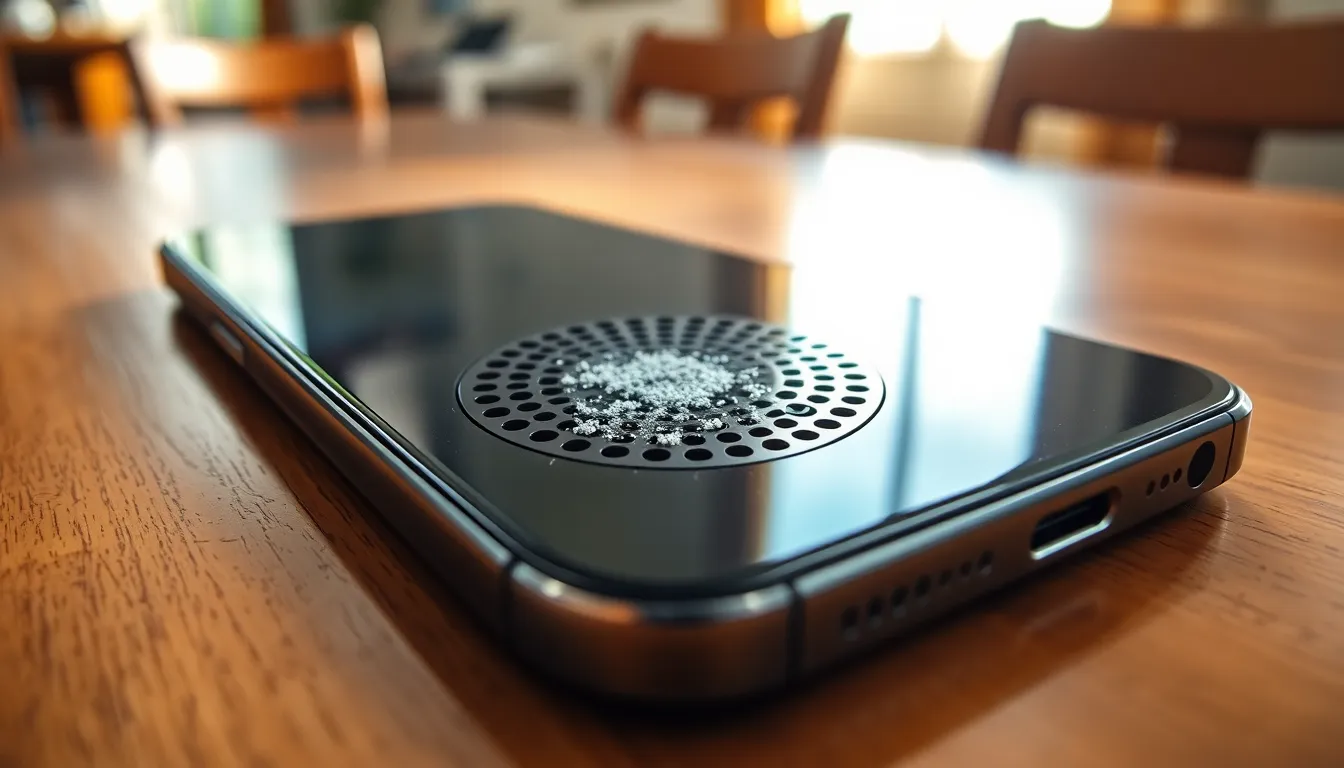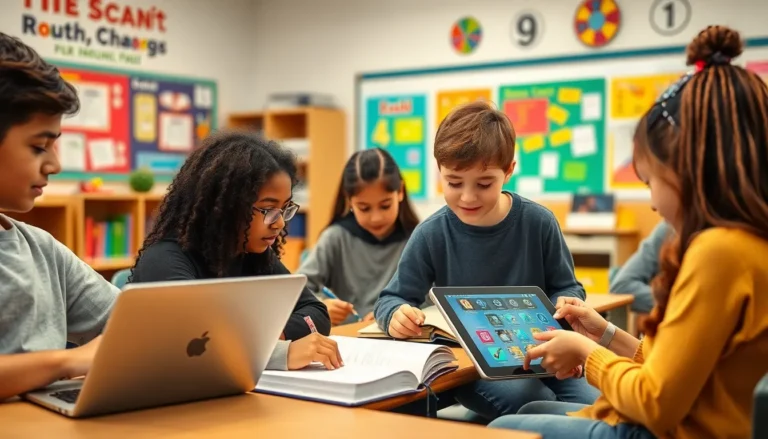Is your iPhone whispering sweet nothings instead of blasting your favorite tunes? You’re not alone. Many users find themselves cranking the volume up only to be met with a sound that’s more “muffled mouse” than “rock concert.” It can feel like your phone’s gone on a sound diet, and you’re left wondering why.
Table of Contents
ToggleUnderstanding Volume Issues on iPhone
Low volume on an iPhone often frustrates users accustomed to clear audio. Identifying the root cause helps in restoring sound quality.
Common Causes of Low Volume
Factors like hardware issues and settings often contribute to low volume. Dirty speaker grilles can obstruct sound, leading to muffled output. Connectivity problems with Bluetooth devices also affect audio clarity. Volume settings may unintentionally lower species, especially with Do Not Disturb activated. Background apps sometimes interfere with sound levels, causing an inconsistent experience.
Effects of Software Updates on Volume
Software updates impact volume settings significantly. Occasionally, an update may reset audio preferences, leading to lower sound levels. Some updates introduce new features that modify how volume adjusts across apps. Occasionally, bugs or glitches that arise after updates cause audio issues, leading to user frustration. Ensuring software is up to date typically resolves these problems, restoring expected sound performance.
Hardware Factors Affecting Volume

Several hardware factors can cause low volume on the iPhone, impacting users’ auditory experiences.
Speaker Quality and Durability
Speaker quality plays a crucial role in sound output. Manufacturers design iPhone speakers to deliver clear audio, yet varying production batches can affect performance. Over time, wear and tear on these speakers may lead to reduced sound clarity. Users often notice deterioration after extensive use, especially during calls or media playback. Inadequate maintenance can also contribute to speaker decline. Dust accumulation in speaker grilles masks sound quality. Regularly cleaning the device can preserve audio performance.
Environmental Influences
Environmental factors significantly impact volume levels. High ambient noise can make it difficult to hear audio clearly, especially in crowded places or during outdoor activities. Users often report lower satisfaction in such environments, where surrounding sounds compete with media. Additionally, temperature extremes can affect speaker functionality. Prolonged exposure to moisture or extreme heat may damage internal components and degrade sound quality. Ensuring the device remains in a controlled environment helps maintain optimal volume levels.
Troubleshooting Low Volume on iPhone
Troubleshooting low volume on an iPhone involves checking both software and hardware aspects. A few simple adjustments can often resolve the issues users face.
Software Settings to Check
Adjusting software settings can significantly improve sound quality. Check the volume level in the Control Center to ensure it’s at an adequate level. Verify that the Silent mode switch isn’t activated, which can mute all sounds. Navigate to the Settings app and select Sounds & Haptics to confirm ringtones and alerts are set correctly. Additionally, users can review any Do Not Disturb settings; if enabled, that feature can limit audio from apps and calls. Background app interference can also lower volume levels, so closing unnecessary apps may help restore optimal sound.
Physical Checks You Can Perform
Performing physical checks is equally important for maintaining volume integrity. Start by inspecting the speaker grilles for dust and debris; a soft brush or compressed air can effectively clean them. Ensure that there’s no obstruction covering the speaker area, such as a case or protective film. Testing sound output through wired headphones can help identify if the issue lies with the speakers or the device itself. Users should also examine their iPhone for signs of damage, such as cracks or moisture, which can affect speaker performance. Regular maintenance ensures speakers remain clear and functional for optimal audio experiences.
Solutions to Improve iPhone Volume
Improving iPhone volume involves simple adjustments and effective accessory use, enhancing the overall audio experience.
Adjusting Sound Settings
Adjust the volume level by using the physical buttons located on the side of the device. Open the Settings app to explore additional options, including the Sound & Haptics section. In this section, ensure that the Ringer and Alerts slider is set appropriately. Turn off any features like Reduce Loud Sounds, which can limit output volume, causing muffled audio. Check the accessibility settings as well; certain options may inadvertently affect audio levels. Setting the equalizer in the Music app to a different preset can also influence how audio sounds, helping achieve clearer output.
Using External Accessories
Using external accessories can significantly enhance audio performance. Wireless or wired headphones often provide better sound quality and volume than built-in speakers. Bluetooth speakers are another excellent option for those looking for improved sound. Many models offer powerful sound output and portability, making them useful in various environments. Consider sound amplifiers designed specifically for devices; these can boost iPhone volume efficiently. Selecting high-quality accessories improves both the listening experience and the overall enjoyment of audio content.
Low volume on an iPhone can stem from various factors that affect audio performance. Users often encounter issues due to hardware limitations or software settings that may not be optimized. Regular maintenance and proper troubleshooting can significantly enhance sound quality.
By checking speaker grilles for dust and ensuring settings align with personal preferences, users can often resolve these audio challenges. Additionally, leveraging accessories like high-quality headphones or speakers can elevate the listening experience. Staying informed about updates and adjustments will keep the iPhone’s audio capabilities at their best.


